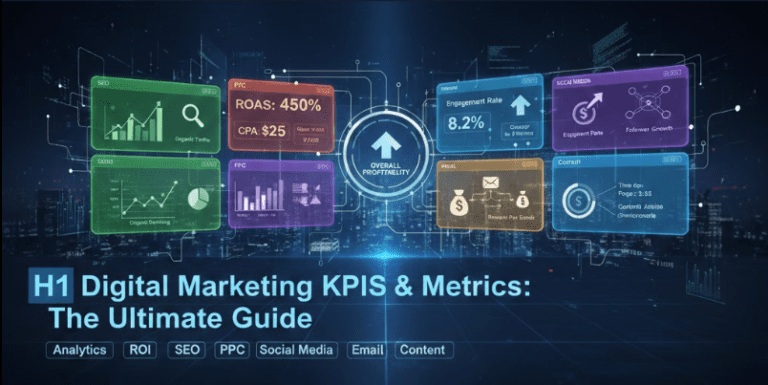The supply chain plays a critical strategic role in a company’s competitiveness. It encompasses all the activities required to plan, procure, produce, deliver, and return products. To ensure optimal efficiency, it is essential to rely on key performance indicators (KPIs). These logistics and supply chain KPIs help evaluate and optimize each segment of the chain.
Let’s explore the main functions of the supply chain and the essential KPIs for improving overall performance.
I. Supply Chain Activities and Core Functions
1. Planning – Strategic function that coordinates all supply chain operations:
- Demand Forecasting: Anticipate customer needs.
- Supply, Production & Distribution Planning
- Capacity Planning: Match resources to forecasted volumes.
- Target Inventory Management: Optimize stock levels.
- S&OP (Sales & Operations Planning): Align sales with production.
2. Procurement (Sourcing) – Managing purchases and supplier relationships:
- Supplier evaluation
- Order placement and tracking
- Contract management and negotiations
- Direct and indirect purchasing
3. Production (Manufacturing / Operations) – Product fabrication and transformation:
- Production scheduling
- Quality control
- Equipment maintenance
- Lean methodologies and scrap management
4. Logistics (Delivery / Distribution) – Physical flow of goods:
- Warehouse management and order preparation
- Transportation (inbound, outbound, returns)
- Customer delivery and logistics provider management
5. Returns Management (Reverse Logistics) – Handling product returns:
- Processing returned goods
- Green logistics and reintegration
- Customer satisfaction in return processes
6. Control & Performance (Support Functions) – Overseeing the supply chain:
- KPI monitoring
- Information systems (ERP, WMS, etc.)
- Risk management and compliance
- Cost and sustainability tracking
Devenez un As du Reporting
Créer des dashboards percutants qui transforment vos données en décisions stratégiques

II. Planning – Key KPIs
| KPI | Description |
|---|---|
| Forecast Accuracy (FA) | Measures deviation between forecast and actual demand. |
| Forecast Bias | Identifies systemic over- or underestimation. |
| Plan Adherence | Measures adherence to original plans. |
| Inventory Turns | Number of times inventory is sold or used over a period. |
| Days Inventory On Hand (DIO) | Number of days inventory can cover demand. |
| Capacity Utilization | Percentage of production capacity used. |
| S&OP Maturity Score | Maturity level of the S&OP process. |
| Stock Coverage Ratio | Duration inventory can meet customer demand. |
| SC Cost as % of Sales | Supply chain cost as a percentage of revenue. |
| Planning Cycle Time | Time taken to develop operational plans. |
III. Procurement – Key KPIs to Track
| KPI | Description |
|---|---|
| Supplier On-Time Delivery | % of deliveries received on schedule. |
| Purchase Price Variance (PPV) | Difference between negotiated and actual price. |
| Supplier Lead Time | Average procurement lead time. |
| Supplier Quality Rate | % of conforming products received. |
| Supplier Fill Rate | % of orders fully delivered. |
| Cost of Procurement per Order | Average administrative cost per order. |
| Number of Approved Suppliers | Number of validated suppliers. |
| Contract Compliance Rate | Supplier compliance with contract terms. |
| E-Procurement Rate | Proportion of purchases made electronically. |
| Risk Exposure Index | Supplier risk level. |
IV. Production – Key Performance Indicators
| KPI | Description |
|---|---|
| Overall Equipment Effectiveness (OEE) | Overall efficiency of production equipment. |
| Production Schedule Adherence | Compliance with production timelines. |
| First Pass Yield (FPY) | % of defect-free products on first run. |
| Scrap Rate | % of rejected or wasted products. |
| Downtime | Total machine downtime. |
| Cycle Time | Average time to produce one unit. |
| Capacity Utilization Rate | Real use of production line capacity. |
| Labor Productivity | Output per labor hour. |
| Cost per Unit Produced | Production cost per unit. |
| Maintenance Compliance | Adherence to maintenance schedules. |
V. Logistics / Delivery – Essential Logistics KPIs
| KPI | Description |
|---|---|
| OTIF (On-Time In-Full) | % of orders delivered completely and on time. |
| Delivery Lead Time | Average time to deliver to the customer. |
| Transport Cost per Unit | Logistics cost per transported unit. |
| Perfect Order Rate | % of orders without errors (damage, delays, etc.). |
| Order Cycle Time | Time between order placement and delivery. |
| Inventory Accuracy | Discrepancy between actual and recorded inventory. |
| Picking Accuracy | Accuracy in order picking. |
| Backorder Rate | % of unfulfilled orders due to stockouts. |
| Warehouse Utilization | Storage space occupancy rate. |
| Damage Rate | % of goods damaged during transport. |
VI. Returns Management – Monitoring Reverse Flows
| KPI | Description |
|---|---|
| Return Rate | % of returned products. |
| Return Processing Time | Average time to process returns. |
| Reverse Logistics Cost | Total cost of reverse logistics activities. |
| % Reused / Repaired Products | Returned products reintegrated into the supply chain. |
| Credit Issuance Time | Time to issue customer refunds. |
| % of Returns Due to Quality | Returns caused by quality defects. |
| Product Recall Efficiency | Effectiveness of product recall campaigns. |
| Return Rate per SKU | Returns analyzed per product SKU. |
| Environmental Impact of Returns | Recycling rate vs. waste rate. |
| Customer Satisfaction on Returns | Satisfaction with the return process. |
VII. Support & Control – Driving Accuracy and Efficiency
| KPI | Description |
|---|---|
| SC Cost to Serve | Cost to serve per customer segment. |
| KPI Achievement Rate | Percentage of overall targets achieved. |
| System Uptime | Availability of IT systems. |
| Data Accuracy Rate | Reliability of supply chain data. |
| Staff Productivity | Efficiency of logistics/supply personnel. |
| Training Compliance | Staff training completion rate. |
| Sustainability Metrics | Environmental impact (CO2, waste, etc.). |
| Cybersecurity Incidents | Number of IT security breaches. |
| Audit Compliance Rate | Adherence to audit and quality standards. |
| Technology Adoption Rate | Integration of digital technologies. |
VIII. The Role of Transport CRM in the Supply Chain
Integrating a transport CRM can significantly enhance logistics operations. These platforms improve visibility into customer interactions, streamline communication among stakeholders, and optimize delivery planning.
Features such as real-time order tracking, claims management, and customer satisfaction tools empower businesses to boost overall supply chain performance, reduce costs, and improve operational efficiency.
To maximize benefits, it’s crucial to explore CRM features tailored to your supply chain’s specific needs.
IX. Supply Chain Performance FAQ
1. What are the key performance indicators (KPIs) for measuring supply chain performance?
Common KPIs include customer satisfaction rate, total supply chain cost, inventory turnover rate, service level, and demand forecast accuracy.
2. How can supply chain performance be improved?
By optimizing internal processes, automating routine tasks, collaborating closely with suppliers, adopting advanced inventory management technologies, and leveraging data-driven forecasting tools.
3. Why is customer satisfaction rate important in the supply chain?
It reflects the quality of logistics services. A high satisfaction rate indicates that customer expectations are met, enhancing loyalty, company reputation, and growth.
4. How can CRMs help improve supply chain performance?
CRM tools centralize customer information, improve communication, and allow real-time order tracking—leading to faster, more accurate service and a more responsive supply chain.
5. What are common challenges in managing supply chain performance?
Key challenges include cost optimization, demand forecasting, maintaining customer satisfaction, managing inventory turnover, and improving delivery timelines.



